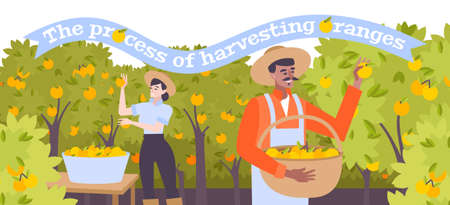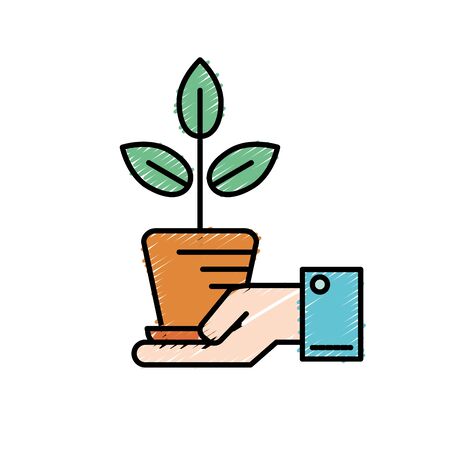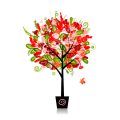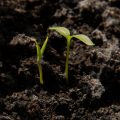Introduction to Seed Saving
Seed saving is more than an old-fashioned gardening technique—its a powerful act of environmental stewardship that empowers individuals to shape their food future. By collecting and preserving seeds from your own garden, you become part of a tradition that stretches back thousands of years, connecting modern zero-waste gardeners with ancient agricultural practices. In today’s world, where industrial agriculture dominates and many crops are bred for uniformity rather than resilience, seed saving emerges as a vital way to preserve biodiversity. It’s not just about growing vegetables; it’s about fostering sustainability, boosting self-sufficiency, and strengthening local food systems. By learning how to save seeds, home gardeners help ensure that rare and heirloom varieties don’t disappear, keep valuable genetic diversity alive, and reduce reliance on commercial seed sources—many of which are owned by just a handful of corporations. Seed saving also cuts down on waste by reusing what nature already provides, perfectly aligning with the zero-waste movement’s core principles. Whether you’re a seasoned gardener or just starting out, understanding the roots and significance of seed saving is the first step toward creating a more resilient and sustainable food system right in your own backyard.
Benefits of Zero-Waste Gardening
Zero-waste gardening is more than a trend—its a sustainable approach that aligns perfectly with seed saving. By integrating seed saving into your gardening routine, you can dramatically reduce both environmental impact and household waste. Here’s how this mindful practice supports a zero-waste lifestyle:
Reducing Household Waste
Seed saving allows gardeners to reuse seeds from their own crops year after year, cutting down on packaging waste from commercially purchased seeds. This not only minimizes the amount of plastic and paper ending up in landfills but also eliminates the need for excessive shipping and storage. By keeping the cycle local and circular, zero-waste gardeners make their households greener and more self-sufficient.
Minimizing Environmental Impact
When you save seeds, youre reducing your reliance on large-scale agricultural operations that often use heavy machinery, chemical fertilizers, and long-haul transportation—all of which contribute to pollution and greenhouse gas emissions. Seed saving helps keep biodiversity alive in your backyard while shrinking your carbon footprint.
Seed Saving vs. Traditional Seed Buying: Environmental Impact
| Seed Saving | Traditional Seed Buying | |
|---|---|---|
| Packaging Waste | Minimal to None | High (Plastic/ Paper) |
| Transportation Emissions | Very Low | Moderate to High |
| Biodiversity Support | High (Local Varieties) | Often Low (Standardized Crops) |
| Chemical Inputs | Typically Organic Methods Used | May Involve Industrial Chemicals |
| Sustainability | Circular & Localized | Linear & Globalized |
Cultivating Community and Resilience
Zero-waste gardening isn’t just about what stays out of the trash—it’s about what gets shared within a community. When gardeners exchange seeds locally, they help preserve heirloom varieties and strengthen food security close to home. These actions foster a culture of resourcefulness and resilience that benefits neighborhoods across America.

3. Selecting Seeds for Home Gardens
Choosing the right seeds is a crucial step for zero-waste gardeners who want to preserve biodiversity and grow resilient, productive gardens at home. When selecting seeds, focus on heirloom and open-pollinated varieties rather than hybrids or genetically modified options. Heirloom seeds are prized for their rich history, unique flavors, and genetic diversity. These varieties have been passed down through generations and are adapted to specific American climates, making them a great choice for sustainable home gardening.
Why Choose Heirloom and Open-Pollinated Seeds?
Heirloom and open-pollinated seeds can be saved and replanted year after year without losing their true characteristics, unlike hybrid seeds which often produce unpredictable results in subsequent generations. This not only supports a closed-loop, zero-waste garden but also helps maintain plant diversity in your local ecosystem.
Supporting Biodiversity at Home
By growing multiple types of vegetables, fruits, and flowers from diverse heirloom sources, you encourage pollinators like bees and butterflies to visit your garden. This boosts both your harvests and your local environment’s resilience. Look for varieties that are native or well-adapted to your USDA hardiness zone—this ensures they’ll thrive with minimal inputs like water or fertilizer, further reducing waste.
Where to Find the Best Seeds
Reputable seed libraries, local gardening clubs, and American seed companies specializing in heirloom varieties are excellent resources. Many organizations even offer regional collections curated specifically for different parts of the United States. Always check labels for “open-pollinated” or “heirloom” designations, and consider connecting with local growers for tips on what works best in your area.
Selecting the right seeds is more than just a practical gardening decision—it’s a commitment to preserving America’s agricultural heritage and promoting a healthier planet. By making mindful choices now, zero-waste gardeners can help ensure a diverse bounty for future generations.
4. Hands-On Seed Saving Techniques
Preserving seeds at home is both an art and a science, and it’s totally doable for zero-waste gardeners in the U.S. Here’s a step-by-step guide to collecting, cleaning, and storing seeds from common vegetables, herbs, and flowers found in American gardens. These techniques help you close the loop on your garden’s lifecycle—saving money, reducing waste, and supporting biodiversity.
Step 1: Choosing the Right Plants
Select healthy, disease-free plants that display the traits you want to keep—like size, flavor, or color. Open-pollinated or heirloom varieties are best for true-to-type seeds. Hybrid seeds often don’t produce consistent results.
Step 2: Collecting Seeds
Vegetables
- Tomatoes: Scoop out seeds from ripe fruit. Place in a jar with water for 2-3 days to ferment (removes gelatinous coating), then rinse.
- Peppers: Remove seeds from fully ripe peppers; spread them out to dry.
- Lettuce: Wait until flower heads become fluffy and brown, then shake seeds into a paper bag.
Herbs
- Basil: Allow flower spikes to turn brown; gently crush and sift out seeds.
- Cilantro/Coriander: Harvest when seed heads turn brown; rub off round seeds.
Flowers
- Zinnias: Let flower heads dry on the plant; pluck off petals and pull out arrowhead-shaped seeds.
- Sunflowers: Cut heads when back turns yellow; hang upside down in a dry spot, then rub seeds free.
Step 3: Cleaning Seeds
Remove as much chaff and plant material as possible. For wet seeds (like tomatoes), rinse under running water after fermentation. For dry seeds (like beans), blow away lightweight debris or use a fine sieve.
Step 4: Drying Seeds
Spread cleaned seeds in a single layer on a paper towel, plate, or screen in a well-ventilated area out of direct sun for about one week. Make sure they’re completely dry before storage—moisture can cause mold!
Step 5: Storing Seeds Properly
| Seed Type | Best Storage Container | Ideal Storage Location |
|---|---|---|
| Vegetables (e.g., beans, peas) | Papers envelopes or glass jars | Cool, dark place (e.g., basement or closet) |
| Herbs (e.g., basil, dill) | Pill bottles or small tins | Away from heat & humidity |
| Flowers (e.g., marigold, sunflower) | Coin envelopes or zip bags | Shoe box in pantry or fridge (optional) |
Add labels with plant name and collection date. Most garden seeds will stay viable for at least 1–3 years if kept cool and dry—just another way you’re building resilience right at home!
5. Best Practices for Seed Storage
Proper seed storage is the backbone of successful seed saving, especially for zero-waste gardeners committed to preserving biodiversity at home. To ensure your seeds remain viable and ready for next season’s planting, it’s crucial to pay attention to labeling, storage conditions, and organization.
Labeling: Don’t Skip the Details
Always label your seeds clearly with essential information such as plant variety, harvest date, and any specific notes about the parent plant or growing conditions. Use waterproof markers on envelopes or glass jars, or opt for recycled paper labels sealed with tape. Detailed labeling not only helps you track what you have but also allows you to share accurate information if you exchange seeds with friends or local gardening groups.
Storage Conditions: Keep Seeds Cool, Dark, and Dry
The ideal environment for seed storage mimics nature’s way of preserving seeds through winter: cool, dark, and dry. Store your labeled seeds in airtight containers such as mason jars or reused glass bottles with tight-fitting lids. Place them in a location away from direct sunlight—think basement shelves, closets, or even the back of your refrigerator for long-term storage. Add a silica gel packet or a spoonful of dry rice to absorb excess moisture and prevent mold growth.
Temperature and Humidity Control
Seeds last longest when kept at temperatures below 50°F (10°C) and humidity levels under 50%. If you live in a humid region, consider investing in a small dehumidifier for your seed storage area or use desiccant packets inside containers.
Organizing Your Home Seed Library
A well-organized home seed library makes it easy to find what you need when planting season rolls around. Sort seeds by plant family, sowing time, or garden bed location using recycled envelopes, upcycled tins, or divided boxes. Create an inventory list—either digitally or on paper—to track quantities and expiration dates. This simple system saves time and reduces waste by helping you avoid buying duplicates or letting seeds go unused.
Community Tip
If you’re passionate about biodiversity and zero-waste gardening, consider joining or starting a neighborhood seed swap! Well-organized seed libraries are perfect for sharing locally adapted varieties with fellow gardeners while promoting eco-friendly habits in your community.
6. Community, Sharing, and Seed Swaps
One of the most rewarding aspects of seed saving is connecting with fellow gardeners who share your passion for biodiversity and zero-waste living. In America, exchanging seeds within local communities is a cherished tradition that not only preserves heirloom varieties but also strengthens neighborhood bonds.
The American Tradition of Seed Swaps
From rural towns to bustling cities, Americans have long gathered at libraries, community centers, and farmers’ markets to trade seeds, stories, and gardening tips. These events—known as seed swaps—foster a spirit of generosity and collective stewardship over our food heritage. They offer a unique opportunity to discover regionally adapted plants, learn about others’ gardening successes (and failures), and celebrate local biodiversity together.
How to Start a Neighborhood Seed Swap
If you’re eager to start your own seed swap, begin by reaching out to local gardening clubs, schools, or environmental organizations that might be interested in co-hosting. Choose a convenient location like a park shelter or community hall. Spread the word through flyers, social media groups, and neighborhood apps such as Nextdoor. Encourage participants to bring labeled envelopes or jars containing saved seeds along with information about each variety—where it was grown, its characteristics, and any growing tips.
Joining Existing Seed Exchange Networks
If organizing isn’t your thing, you can join established seed swaps in your area. Many public libraries now host “seed libraries,” where you can borrow seeds for free and return new ones at the end of the season. Local cooperative extensions or Master Gardener programs often sponsor annual exchanges. By participating in these community-driven efforts, you contribute directly to preserving rare plant genetics and empowering more people to garden sustainably.
Whether you’re swapping tomato seeds with a neighbor or mailing beans across state lines, sharing seeds keeps traditional varieties alive and cultivates lasting friendships—one envelope at a time.


